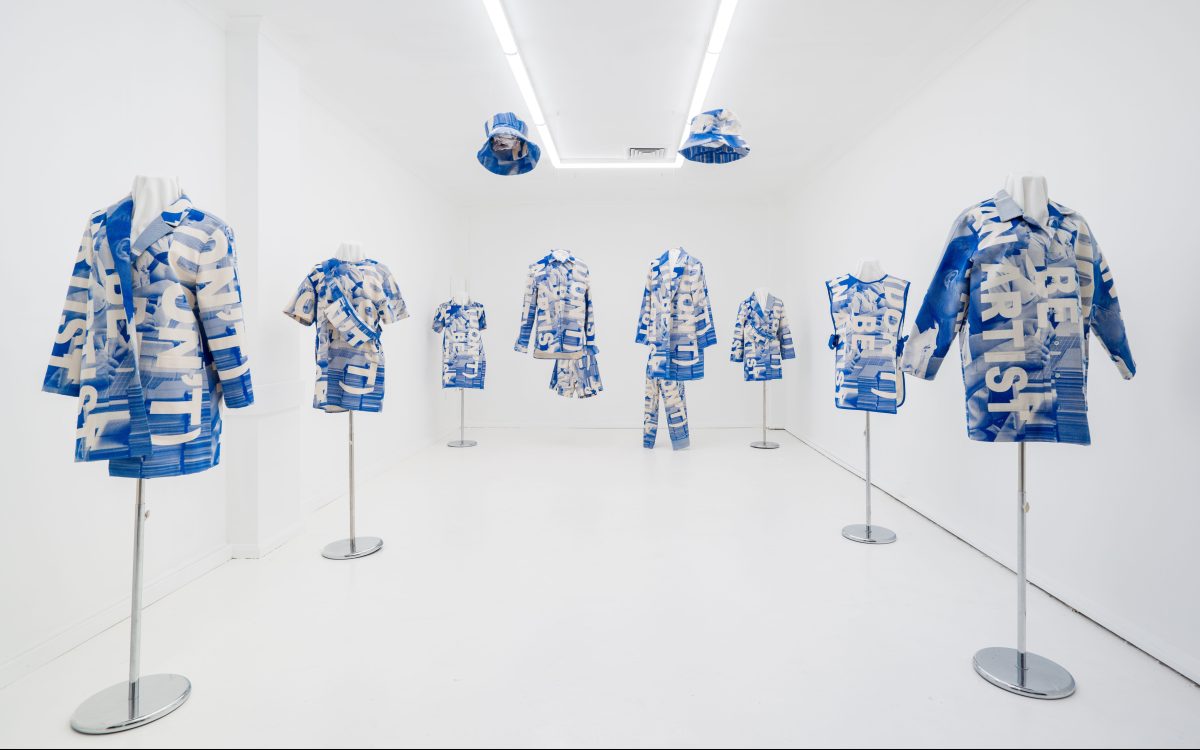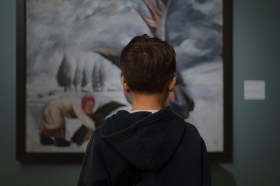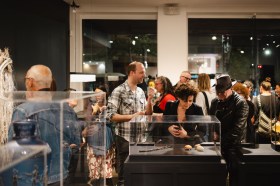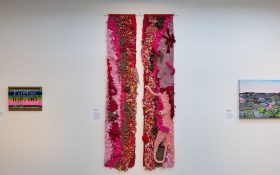During the announcement of the new National Cultural Policy, Revive, a recurring statement from political representatives that ‘arts jobs are real jobs’ was met with resounding applause. I initially felt the same sentiment; after so long under hostile governance, it felt like a relief to have our hard work finally seen and validated. Nevertheless, as an artist, something felt incongruous.
The issue of whether art is work is can be nebulous and circular. Art = labour = work … but still somehow different? The absurdity is skilfully captured in a recent essay by The White Pube’s Zarina Muhammad. In it, a horse, who is also an artist, goes on a residency. After the work day is done, she grapples with the strange sense that she is not doing the same kind of work as others who run the gallery:
Labour is work is art is work is labour, the horse works and the artist is a worker, the horse is an artist and horses understand work intimately, therefore the artist is a kind of workhorse. And HORSE is the only stable entity in that whole conundrum: art, work, horse… What even is work anyway! Hooves hammered on the keyboard, tap-tap-typing.
Zarina Muhammad, The White Pube
While it seems silly at first, the artist-horse’s exclamation ‘What even is work anyway!’ is relevant for anyone whose labour blends work and life to the extent that an artist’s does. As I have written about previously, artists labour in a distinct, human way. When you bring your whole self to work, what is work?
Professionalisation in a precarious context
As the pandemic threw the economic precarity and mental health of artists into sharp relief, a reckoning about the nature of contemporary artistic work itself came to the forefront. For the May 2020 issue of Running Dog, editor Naomi Riddle lamented how much of the labour involved in being a “professional” artist has little to do with producing an artwork. She writes,
Carving out a “career” as an artist requires the ability to be “adaptable”, to write in grant-speak, to arrange the act of making in a way that can be translated in applications (before the making has even begun), to compete for art prizes and residencies, to secure exhibitions at regular intervals, and to maintain a high degree of visibility. (And, for those who are able to perform all these necessary tasks, financial security does not necessarily await.)
Naomi Riddle, Running Dog
With the rise of the term “professional practice”, it has become the norm to view these burdens not just as a necessary evil, but as an implicit and accepted part of being an artist. But, for many, the stability that “professional” success promised has never materialised. In fact, precarity has risen.
This state of things has a lot to do with a lack of industry funding, regulation and workers’ rights. However, as Matteo Pasquinelli, Professor in Media Philosophy at the University of Arts and Design Karlsruhe, points out, the issue goes beyond the industry. In his essay ‘The Art of Ruins’, Pasquinelli recognises that our immaterial economy is overwhelmingly structured to channel the value and wealth arising from creative activity upwards, rather than to the primary producers on the ground. He describes how the production of culture feeds a vertical accumulation of capital clearly visible in the example of the creative city. Here, ‘the art world and urban subcultures have been integrated in a more general social factory that provides, for instance, symbolic capital for processes of gentrification and real estate business’. Of course, artists are among those impacted by the resulting precarity, forced out of their home suburbs and cities as the rents rise.
Read: Why capitalism isn’t paying for creative labour
Broadly speaking, artists inhabit a system of financial speculation that exploits them not just at work but in the immaterial commons which, being so generalised, goes beyond individual artist adaptability, employment conditions or how well they are able to compete in the professional sphere. Given these contexts it seems fair to ask, ‘Is the continued conversion of artist into a profession, a “real job”, something that would necessarily benefit artists, or even art itself?’
An alternative view
In her reckoning, Riddle points out how many of our sector responses to crisis continue to rest on mythologies of individual artistic genius, which play out in platitudes around the resilience of artists, the hope artists offer in times of crisis, and the deservedness of continued government funding to keep the industry alive in its current (elitist) form. This mythology also props up creative gentrification processes as a romantic vision of artists’ lives, far from the precarious realities. This image is considered so aspirational that developers can charge more to live among them. In response, Riddle writes, ‘The truth is that I dislike every one of these tropes and the way they put a ring around artistic creation, elevating its labour and value, rather than making it ordinary – a part of a life.’
As I reflect on the experience of labouring while undervalued, I consider the many other kinds of social roles that are currently neglected by the system: parenting, caregiving, cultural and environmental custodianship, community stewardship and activism (to name a few). To me, art is only a “real job” as much as all of these are real jobs – everyday labours that require the whole self. All are similarly embodied, life-affirming and creative while being historically othered by the colonial, patriarchal and capitalist systems that continue to define what is valuable.
To me, art is no more (or less) special. It strikes me that artists’ work has much more in common with these kinds of labours than what we typically call “real jobs”, particularly when the burdens of professionalisation are removed. It is also no coincidence that these labours fall disproportionately to women, people from Indigenous and non-Anglo communities, people who live regionally, and those who are otherwise socioeconomically marginalised. Moreover, large portions of the art world already inhabit these intersections (I’d hazard a guess that it is more than many other industries).
This alternative lens places our industry in a unique position. Rather than justifying art as a “real job”, our advocacy may work in solidarity to shift our economic values from the ground up.
An artist-centred industry may begin by advocating for a genuinely transformative policy such as a basic income for artists. Such a scheme could meaningfully support all of our community members, not just as professionals, or as romantic artists, but as people engaging in the necessary everyday labours of sustaining each other and our world. Even better, the arts industry could become a key voice in the push for a universal basic income (UBI) as recently established in Finland – a bold policy that gives every citizen a basic obligation-free living wage to meet their living costs. Funded by a progressive taxation policy, this is one example where wealth is meaningfully redistributed across the whole system.
These goals may seem Utopian, something better shelved in favour of more achievable policies that can be framed to fit current government logic. But in doing so, who are we leaving behind, and are we missing an opportunity? What kinds of possibilities for a restructured industry would this open up? How could this approach, paradoxically, support the implementation of better workers’ rights?
A UBI isn’t that Utopian anyhow. It is worth noting that universal income schemes are not specifically new to Australia (the Disability Support Pension, the Age Pension and the Family Tax Benefit scheme are all current examples). It is also easy to forget that we had a taste of how this could be achieved during the pandemic. And, in an economic context where precarity is on the rise, stress is being validated as a costly public health concern and new technology is already replacing jobs – the long-visioned ‘post-work world’ is already becoming a reality. The definition of work is changing, and artists are just among those who are already there.
This article is published under the Amplify Collective, an initiative supported by The Walkley Foundation and made possible through funding from the Meta Australian News Fund.





